Zotac GeForce GTX 1070 Ti AMP Extreme Review
Why you can trust Tom's Hardware
Cooling & Noise
Cooling System & Backplate
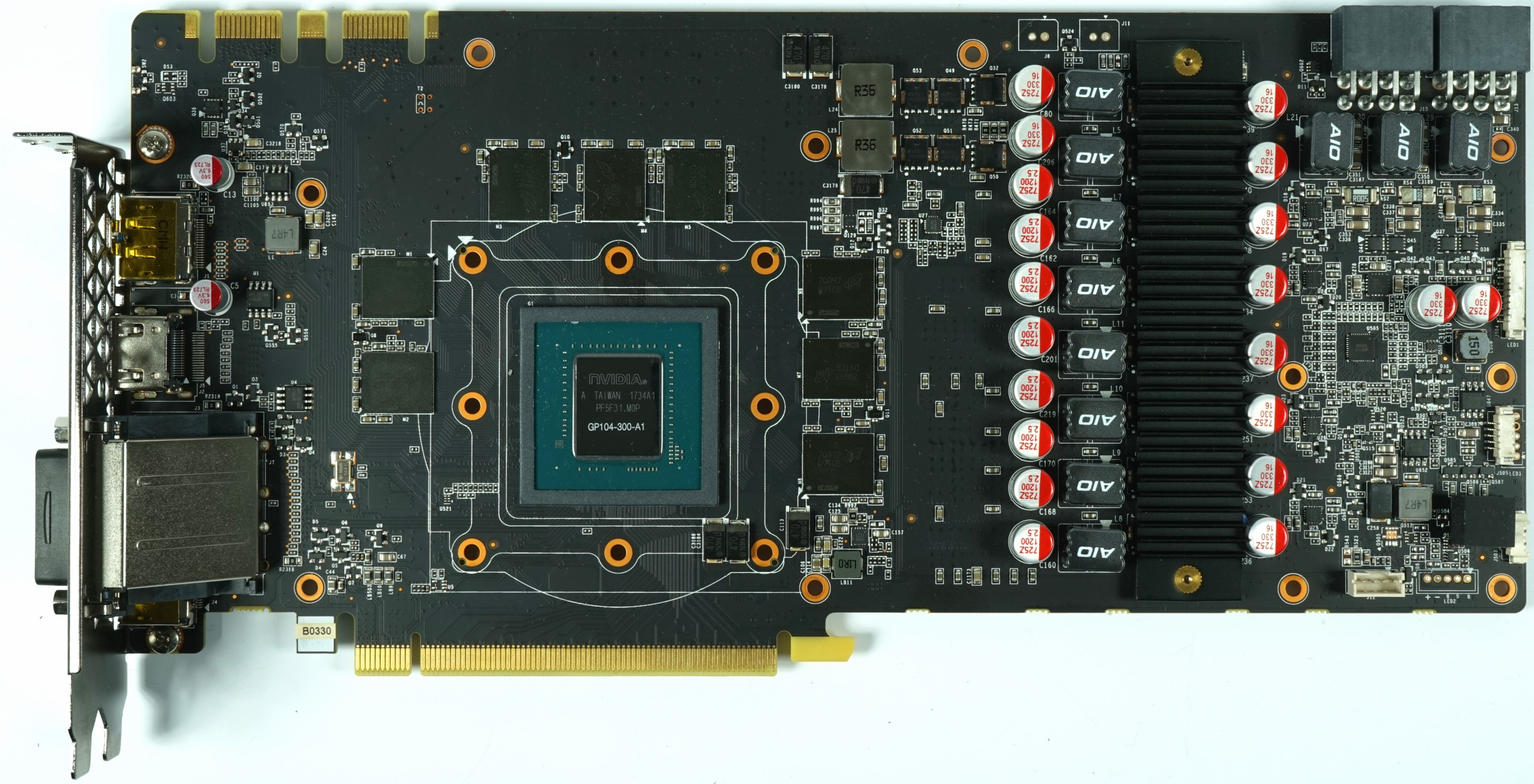
The GPU power supply's eight converter circuits are connected to 24 MOSFETs, which are covered by a passive cooler that should be cooled by airflow from the fans above. While this specific approach failed on the GeForce GTX 1080, it works surprisingly well this time around. The reason why has to do with airflow, as we'll soon see.

| Cooling System Overview | |
| Type | Air cooler |
| Heat Sink | Copper CPU heat sinkMemory cooling (modules, voltage converters), via mounting frame on sink |
| Cooling Fins | Aluminum, vertical orientationNarrow configuration |
| Heat Pipes | 4x 8mm and 2x 6mmCopper composite material |
| VRM Cooling | GPU-VRM via small, passive finned heat sinkMemory VRM indirectly via the cooling frame |
| RAM Cooling | Via mounting frame, and indirect cooling via heat sink |
| Fans | 3x 9.2cm fan module (8.7cm rotor diameter)Nine rotor blades eachFixed minimum speed (39%)No semi-passive control |
| Backplate | AluminumNo cooling function; foil on the insideRGB effects |
Zotac went with a massive copper sink for cooling Nvidia's GPU. Four 8mm and two 6mm heat pipes made from a copper composite material dissipate heat evenly into the large array of aluminum fins. Meanwhile, a large aluminum base plate helps cool the memory modules and their two voltage converter phases.
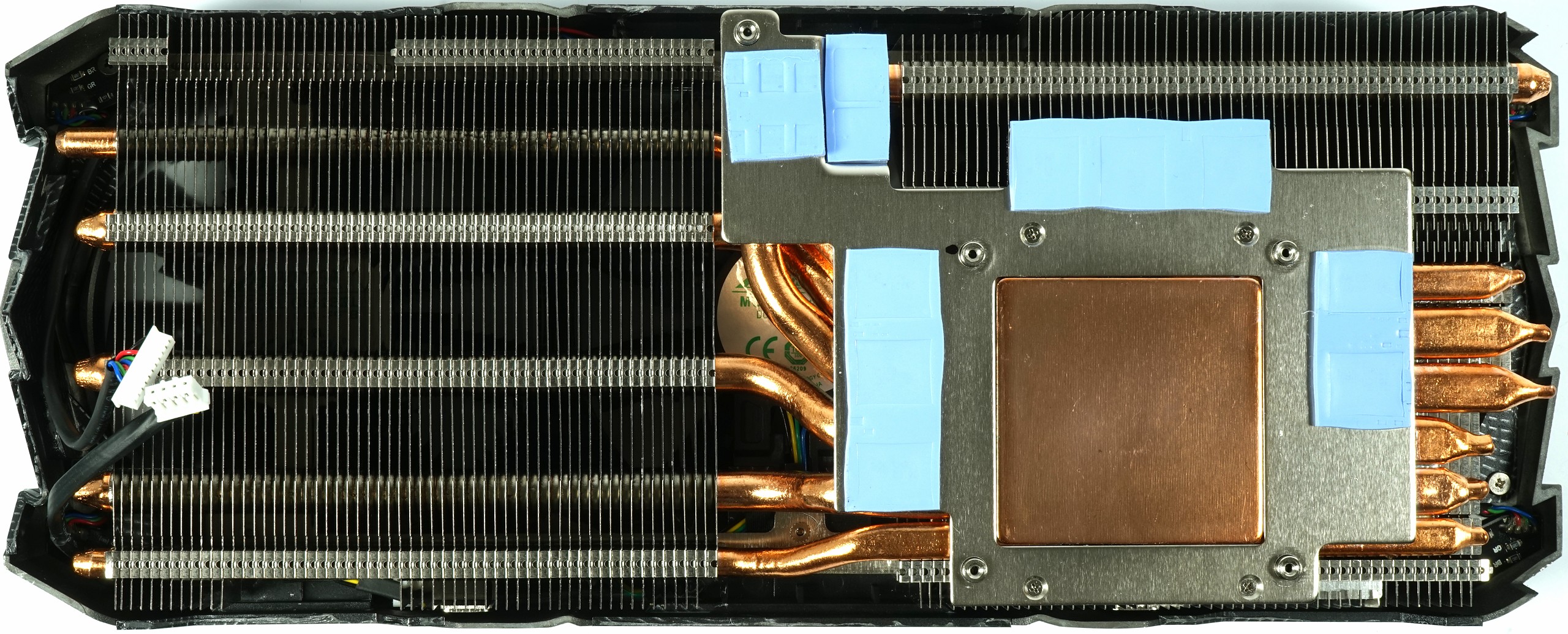
Fan Speeds and Noise
Zotac's fan curve doesn't strike us as optimized. Instead of a semi-passive fan mode, which didn't quite work for the GTX 1080 AMP Extreme, this card relies on too-high of a minimum fan speed. At 39% duty cycle, it's even higher than the GTX 1080's 1250 RPM measured under full load in a closed case.
We asked Zotac for a statement clarifying the behavior of its fan curve and received the following explanation:
"The 39% minimum was a requirement from Nvidia...The card doesn't support a semi-passive mode because we did not have enough time to implement the new version of Fan Stop. So, rather than using the original version of Fan Stop, which did not work as well, we decided to remove it."
This means we have to hope and wait for an improved firmware that works well enough to get Nvidia's approval.
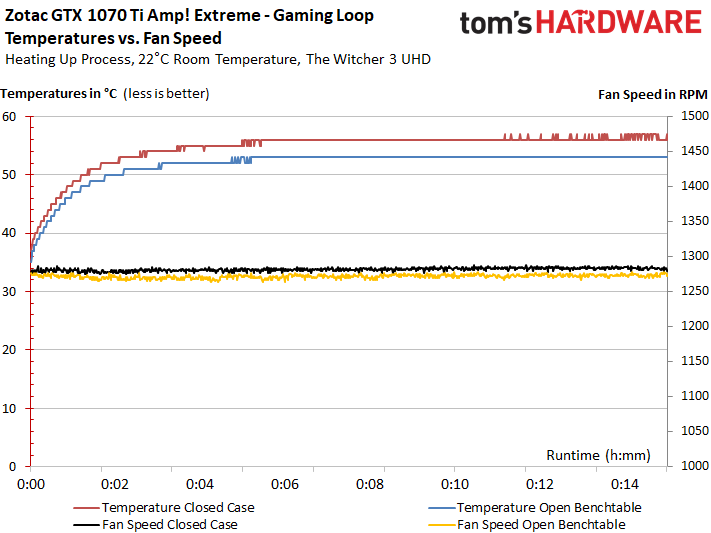
Our stress test doesn't change anything; despite this card's three capable fans, it's clearly audible. The RPM reading changes little even after the temperature readings stabilize under load. Unfortunately, Zotac's implementation is far from ideal.
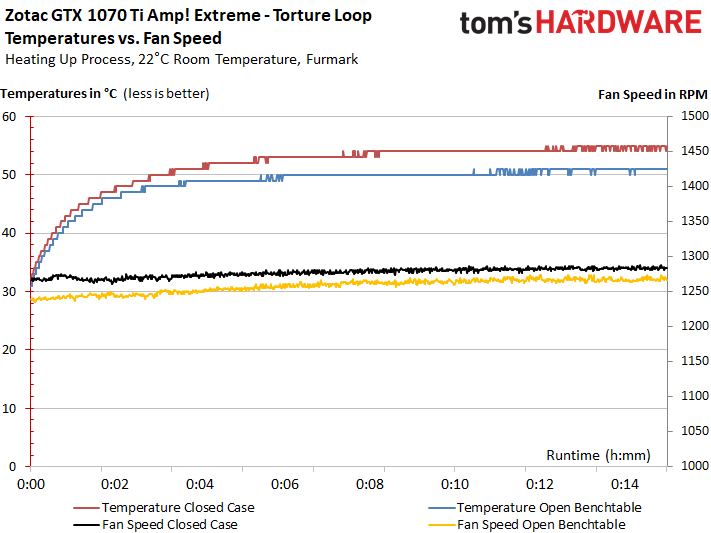
Obviously, the GeForce GTX 1070 Ti AMP Extreme should allow for lower fan speeds at idle, keeping it a little quieter.
| Fan Speed and Noise Output | |
| Fan Speed (Open Test Bench, Maximum) | 1282 RPM |
| Fan Speed (Open Test Bench, Average) | 1274 RPM |
| Fan Speed (Closed Case, Maximum) | 1296 RPM |
| Fan Speed (Closed Case, Average) | 1282 RPM |
| Noise (Air Cooling, Maximum) | 40.1 dB(A) |
| Noise (Air Cooling, Average) | 39.7 dB(A) |
| Noise (Air Cooling, Idle) | 39.2 dB(A) |
| Acoustic Characteristics | Almost no low-frequency bearing noiseSlightly audible motor noise <1 HzAudible air/tearing noiseSlight voltage converter noise |
This snapshot illustrates the entire frequency range of our laboratory measurements, adding some data to our subjective observations.
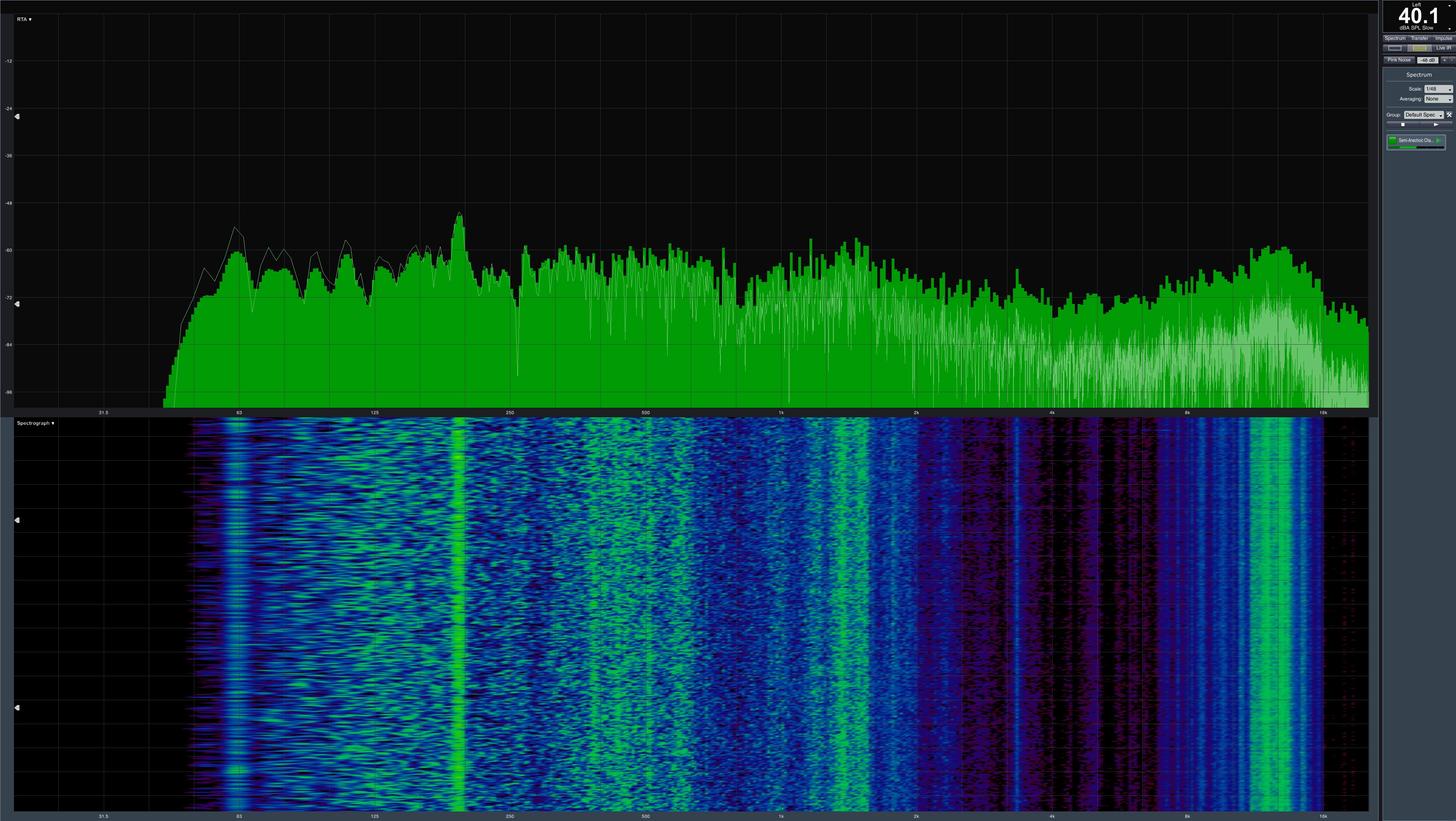
Almost 40 dB(A) at idle isn't good at all, calling Zotac's execution into question. Perhaps the company didn't consider it a priority to properly finish up with GeForce GTX 1070 Ti, believing the card wouldn't be particularly popular?
MORE: Best Graphics Cards
MORE: Desktop GPU Performance Hierarchy Table
MORE: All Graphics Content
Current page: Cooling & Noise
Prev Page Temperatures, Clock Rates & Overclocking Next Page ConclusionStay On the Cutting Edge: Get the Tom's Hardware Newsletter
Get Tom's Hardware's best news and in-depth reviews, straight to your inbox.
-
saunupe1911 Man this whole TI crap is a gimmick. My ASUS Strix 1070 maxes out at 2100 and sits stable at 2050 to 2080 during gaming. I don't understand this at all.Reply -
BaRoMeTrIc At 529 it makes absolutely ZERO sense to buy a 1070 Ti. I bought my Strix 1080 OC a month ago for 549 after rebates. If NvIDIA were to price the Ti at 400 and drop the 1070 to 349-359 then the Ti would make sense. But when you can get a 1080 for 10-20 bucks more why would you get a Ti?Reply -
photonboy ZOTAC continues to be unable to create an efficient cooler or even setup a custom fan profile.Reply
The GTX1070Ti is up to 10% slower than a similar GTX1080 (when the slower 1070Ti memory bottlenecks especially), and with the requirement to run the OC software at all times the 1070Ti only makes sense if the value is there.
You also need to consider that it's the TOTAL PC COST (including monitor, games too) you should be comparing to determine value as $50 more for a GTX1080 on a $2000 PC investment is 2.5% of the cost so if you get an average of 5% or more FPS gain it may be worth it.
What's NOT worth it is to spend almost the same or even more than the cost of a GTX1080 that performs better and may be QUIETER to boot. -
Joacko_1990 http://www.tomshardware.com/reviews/sapphire-rx-vega-64-nitro,5388-3.htmlReply
Why are you still using an old version of destiny 2 here and on 64 nitro review since at high 4k settings nvidia get the gains again ? this happend on the old version due to a bug on one of the settings. That is truly stupid tomshardware you should be unbiased. -
FormatC Think first, then write...Reply
The original review was published in German, weeks ago. And the gaming results are, to be honest, more or less secondary. To be comparable between all this 1070 Ti's we also need a frozen system to check each card under the same condtitions (I've tested so far six cards). And it is NOT a Vega vs. Ti review, but a tech analysis of a single VGA card. Not less and not more.